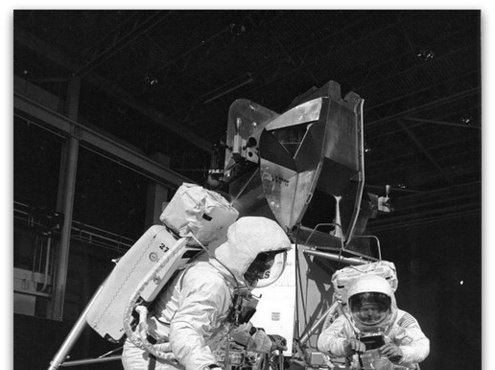
Laser weapons were once the stuff of science fiction, but today they are becoming a reality in modern warfare.
This technology, which is based on the power and precision of light beams, opens the door to new strategies and tactics on the battlefield.
Many countries are now rapidly developing high-energy laser weapons for military missions on land and sea, in the air and in space.
The sight of swarms of small, inexpensive drones filling the sky or flying over the waves is motivating many governments to develop and deploy futuristic weapons as an alternative to missile defense, which is both expensive and vulnerable.
In fact, laser weapons existed as a subject of speculative fiction long before lasers were invented. They have recently been mentioned in some conspiracy theories, which we will look at shortly.
It is therefore necessary to explain to the public how laser weapons actually work and what they are used for.
A quantum leap
To understand all this, we first need to explain what a laser is. The word itself is actually an acronym for the English term “Light Amplification by Stimulated Emission of Radiation”, which means “amplification of light by means of stimulated emission of radiation”. In other words, a laser is a device for creating and amplifying coherent electromagnetic narrowly focused radiation of high intensity.
It is based on quantum phenomena in the transfer of energy by radiation. The exchange of radiation energy with the atoms or molecules of the active medium in the laser (gas, crystal, plasma) takes place by stimulated emission. This happens when an atom or molecule in an excited energy state, in which the electrons are at a higher energy level, is acted upon by an additional source of energy, e.g. white light or electromagnetic field. Thus, the number of atoms in the excited state becomes greater than the number of atoms in the unexcited state, which is called “population inversion”. For the transition to an excited state, it is physically unimportant how the energy was supplied, while during the transition from an excited to a non-excited state, a quantum jump occurs, that is, the emission of photons whose energy corresponds to the difference between the energy states of the atoms.
According to the method of operation, they differ: neutral atomic, ion, gas molecular, gas dynamic, chemical and other types of lasers. According to the type of optically active substances, they are divided into: gas, liquid, semiconductor and general lasers with solid substances.
Today, lasers cover wavelengths of radiation from the far ultraviolet to the far infrared range, and work is underway to build lasers in the X-ray radiation range. There are also lasers, e.g. with a titanium-doped sapphire crystal as the active medium, which can continuously change the wavelength from 700 to 1000 nm, used in laser spectroscopy. In the military industry, lasers are typically used as part of range finders and target designators, and in telecommunications they are also used to create jamming fields. In the United States, extensive work is already underway to create an anti-ballistic missile shield, which would consist of satellites on stationary trajectories equipped with high-powered lasers that could destroy incoming missiles far from a defended position.
However, the military industry places special emphasis on the development of high-energy laser systems based on accumulating a large amount of energy and directing it into a beam of light, which is powerful enough to damage or destroy targets.
Such lasers use special crystals to convert incoming electrical energy into photons. A key aspect of high-power rigid lasers is that the photons are generated in the infrared part of the electromagnetic spectrum, so they cannot be seen by the human eye.
Aeronaut and astronaut Iain Boyd of the University of Colorado (Boulder, USA) in his new essay from March 7 on the Conversation platform notes that a laser beam, interacting with a surface, generates different effects based on the wavelength of the photon, the power in the beam and the surface material. Low-power lasers that generate photons in the visible part of the spectrum are useful as light sources for pointers and light shows at public events, but these beams are so low-powered that they simply bounce off a surface without damaging it.
A devastating effect
Higher power laser systems are used to cut biological tissue in medical procedures, and higher power lasers can heat, vaporize, melt and burn various materials and are used in industrial cutting and welding processes. The ability to perform these various effects is determined not only by the power of the laser but also by its distance from the target.
Today’s militaries are increasingly using high-energy lasers, largely based on advances in high-power industrial lasers. One key advantage of high-energy laser weapons is that they provide an “infinite supply”. Unlike traditional weapons, such as rifles and cannons, which have a limited amount of ammunition, a high-energy laser can continue to fire as long as it has power.
“The U.S. military mounted a high-energy 50 kW (kilowatt) laser on the Stryker armored fighting vehicle to shoot down a range of targets, including drones, helicopters, mortars and missiles, and in February 2024 deployed four DE M-SHORAD systems for the battlefield. testing in the Middle East,” Boyd recalls, continuing:
“In August 2022, the US Navy installed a 60 kW laser weapon on the destroyer USS Preble to defend against small and fast naval vessels, as well as missiles and drones. In 2010, the US Air Force tested a megawatt laser mounted on a modified Boeing 747 that managed to hit a ballistic missile after launch. “They are currently working on a smaller weapon system for fighter jets.”
Russia also appears to be developing a high-energy ground-based laser to “blind” its adversaries’ satellites. The Kalina system is said to operate in pulsed infrared mode and produce about 1 kJ/cm² (kilojoules per square centimeter). By comparison, the pulsed laser used for retinal surgery has 10,000 times less power. Kalina delivers much of the photons it generates to the great distances at which satellites orbit above them. It can do this because the lasers form highly collimated beams, meaning that the photons travel in parallel so that the beam does not spread. Kalina focuses its beam using a telescope several meters in diameter.
Huge energy
“The key challenges for militaries using high-energy lasers are the high power levels required to produce useful effects at a distance. Unlike an industrial laser that can be only a few centimeters from a target, military operations involve much greater distances. To defend against an incoming threat, such as a mortar shell or a small ship, the laser weapon needs to attack their targets before doing any damage,” explains the American expert and adds:
“However, to burn materials at safe distances, it is necessary to fire laser beams with power measured in tens or even hundreds of kilowatts. The smallest prototype laser weapon consumes 10 kW of energy, which is roughly equivalent to an electric car. The latest high-powered laser weapon consumes 300 kW of energy, which is enough to power 30 households. Because high-energy lasers are only 50% efficient at best, they generate an enormous amount of waste heat that must be managed.”
This means that high-energy lasers require extensive power generation and cooling infrastructure that places limits on the types of effects that can be generated by various military platforms. Army trucks and Air Force fighter jets have the least room for high-energy laser weapons, so these systems are limited to targets that require relatively low power, such as downing drones or disabling missiles. Ships and larger aircraft can accommodate larger high-energy lasers with the potential to blast holes in ships and ground vehicles. Permanent ground systems have the least limitations and therefore the most power.
Another important limitation for such a weapon is related to the aforementioned infinite magazine. Because the truck, ship, or plane must carry the power source for the laser, which limits the capacity of the power source, lasers can only be used for a limited time before they need to recharge their batteries.
Conspiracy theories
There are also fundamental limitations to high-energy laser weapons, including reduced effectiveness in rain, fog and smoke, which scatter laser beams. They must also remain focused on the target for at least a few seconds to deal damage. All of this has already proven to be a challenge to maintain on the battlefield.
In recent years, a new breed of conspiracy theory has emerged that claims “evil entities” used high-energy airborne lasers to cause wildfires in California, Texas and Hawaii. This is nonsense for several reasons.
“First, the level of power required to ignite vegetation with a high-energy laser from the sky would require a huge power source installed on a large aircraft. An aircraft of that size would have been clearly visible just before the fire started. Second, in some of the alleged photos that conspiracy theorists claim show fire, the laser beams are green.








